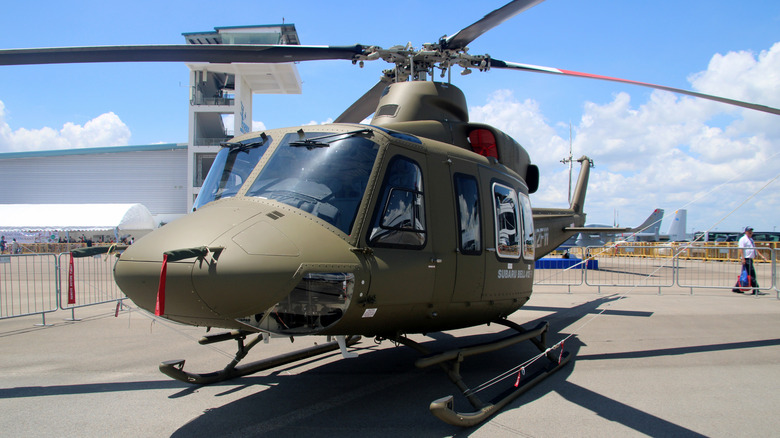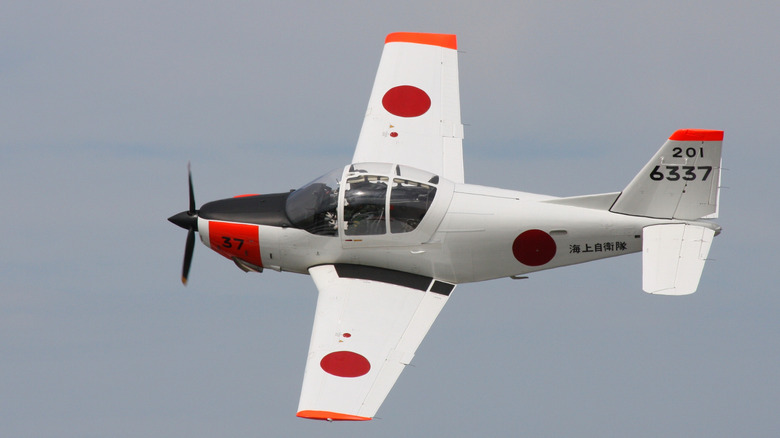
If you've ever seen drivers rallying through America in WRX racecars, you know it's not uncommon for Subarus to spend a certain amount of time off the ground. However, what you might not realize is that Subaru not only had its origins in the aeronautics industry — it continues to build airplanes and helicopters to this day.
It's a long and twisting tale that started with Chikuhei Nakajima, who got interested in flying after he retired from the Japanese Navy. He opened the Aircraft Research Laboratory — sometimes translated as the Airplane Institute — in 1917 to try to expand the role of public aviation in the country. Soon rebranded as Nakajima Aircraft, the company became heavily involved in Japan's military efforts during World War II, after which it was broken up into over 15 pieces.
The next move came in 1953. That's when five of those companies got back together again to form Fuji Heavy Industries to continue supporting aviation. The company soon expanded into auto manufacturing and launched its first prototype — soon to be renamed and sold as the Subaru 1500 — in 1954.
The final piece of the puzzle came in 2016, when Fuji Heavy Industries changed its name to the Subaru Corporation, reflecting the increased brand awareness for its much-loved cars and SUVs. Technically, it's that Subaru — the umbrella corporation — that owns the aerospace business.
The Subaru Corporation offers a three-pronged approach to aeronautics, with separate departments for commercial aircraft, military aircraft, and helicopters.
Subaru's main commercial efforts center around its relationship with Boeing. That relationship dates back to 1973, when Subaru began providing components for Boeing passenger planes. Subaru now primarily builds center wing boxes at its Handa Plant in the Aichi Prefecture for the Boeing 777, the perpetually delayed Boeing 777X, and the Boeing 787. These structures are used to attach the wings to the airplane's fuselage, store fuel, and provide wells for the main landing gear, making them pretty important.
The same plant also makes parts for patrol and transport planes meant for Japan's Ministry of Defense. Japan doesn't have a traditional military, but it does retain Self-Defense Forces, and Subaru is heavily involved in Japan's military-industrial complex — sort of like the folks at GM Defense.
So Subaru also builds the T-5 trainer for the Japan Maritime Self Defense Force. This is a turboprop aircraft with side-by-side seating to help train pilots. However, unlike most Subarus, it skips a homegrown Boxer-style engine for Rolls-Royce power. Subaru previously built the T-7 as well, and that remains part of the Self Defense fleet although it's scheduled for replacement starting in 2030.
 Yudhistira Adityawardhana/Shutterstock
Yudhistira Adityawardhana/Shutterstock
It may be getting too hot for helicopters to fly in some places, but they're still a core pillar of Subaru's aerospace ventures. Credit for that goes to Subaru's ongoing partnership with Bell Textron, an American company known for its military helicopters, among other things. It was Bell's UH-1 Iroquois, known as the Huey, that crowded the skies during the Vietnam War.
Subaru and Bell began working together in 1960, and Subaru started building the commercially focused Fuji-Bell 204B helicopter in 1964. (Don't forget, the Subaru Corporation used to be called Fuji Heavy Industries.)
Today, Subaru manufactures the Subaru Bell 412EPX helicopter on a platform it developed together with Bell for civilian use and for use by Japan's Coast Guard. Subaru further engineered a modified version, called the UH-2, for the Japan Ground Self Defense Force, and the company's military operation even extends to unmanned aerial vehicles (UAVs, or drones). Indeed, Subaru has carved out a global leadership position for drone safety.
As for the future, well, the phrase is low-hanging fruit, but you could say the sky's the limit for Subaru — both on the ground and in the air.















